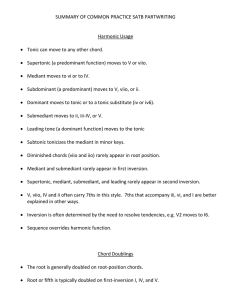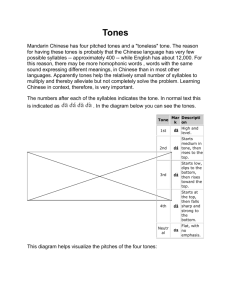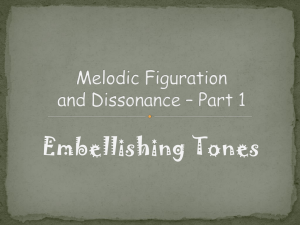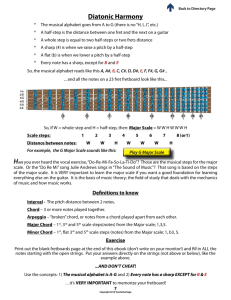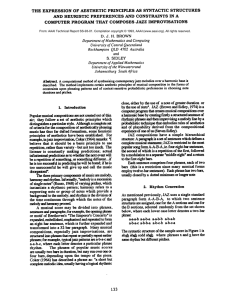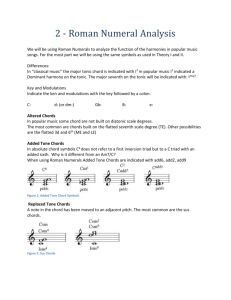STABLE AND UNSTABLE TONES
advertisement
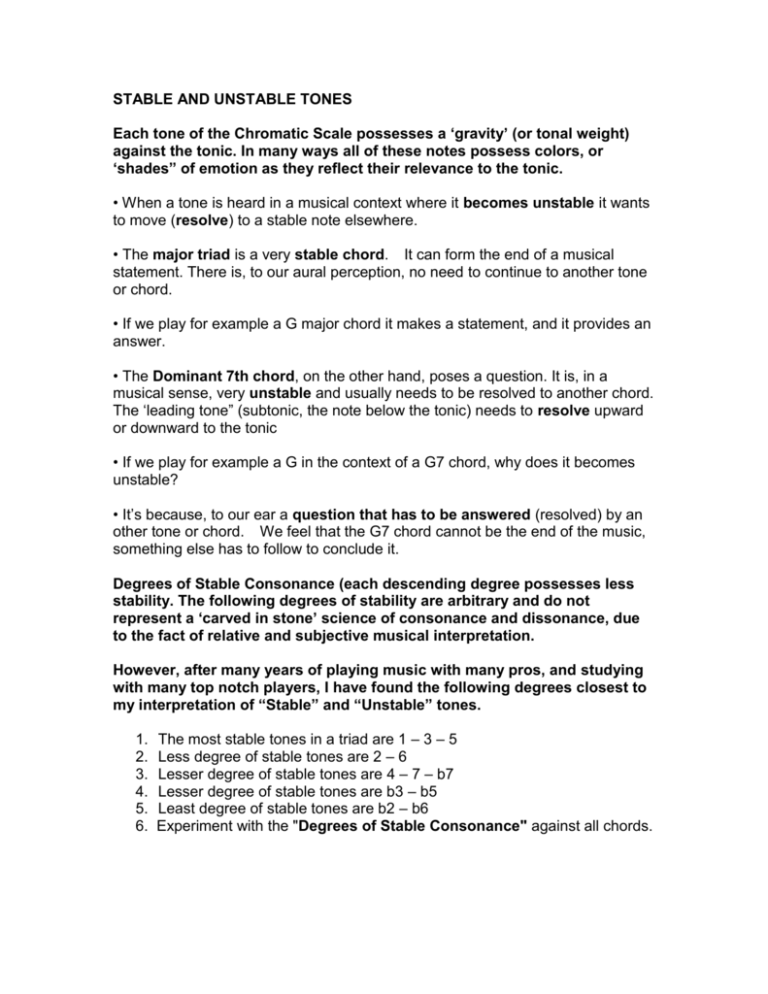
STABLE AND UNSTABLE TONES Each tone of the Chromatic Scale possesses a ‘gravity’ (or tonal weight) against the tonic. In many ways all of these notes possess colors, or ‘shades” of emotion as they reflect their relevance to the tonic. • When a tone is heard in a musical context where it becomes unstable it wants to move (resolve) to a stable note elsewhere. • The major triad is a very stable chord. It can form the end of a musical statement. There is, to our aural perception, no need to continue to another tone or chord. • If we play for example a G major chord it makes a statement, and it provides an answer. • The Dominant 7th chord, on the other hand, poses a question. It is, in a musical sense, very unstable and usually needs to be resolved to another chord. The ‘leading tone” (subtonic, the note below the tonic) needs to resolve upward or downward to the tonic • If we play for example a G in the context of a G7 chord, why does it becomes unstable? • It’s because, to our ear a question that has to be answered (resolved) by an other tone or chord. We feel that the G7 chord cannot be the end of the music, something else has to follow to conclude it. Degrees of Stable Consonance (each descending degree possesses less stability. The following degrees of stability are arbitrary and do not represent a ‘carved in stone’ science of consonance and dissonance, due to the fact of relative and subjective musical interpretation. However, after many years of playing music with many pros, and studying with many top notch players, I have found the following degrees closest to my interpretation of “Stable” and “Unstable” tones. 1. 2. 3. 4. 5. 6. The most stable tones in a triad are 1 – 3 – 5 Less degree of stable tones are 2 – 6 Lesser degree of stable tones are 4 – 7 – b7 Lesser degree of stable tones are b3 – b5 Least degree of stable tones are b2 – b6 Experiment with the "Degrees of Stable Consonance" against all chords. Application for Improvisation: 1). Stable and Unstable Tones. 2). Just as important as the notes in your phrase, are the rhythmic figures you use. 3). The note you finish your line on doesn't have to be a chord tone. 4). Your resting note, depending on the "Degree" of stability and instability, will lend it's "color" or weight of tonal gravity on your statement (musical line). 5. The more "altered" the chord, the more freedom you will have to use less stable tones (the less "stable" tones become "more stable" against altered chords. For example, Eb single note against G+7 sounds very stable within itself (although the leading tone of the dom. 7 chord is begging for resolution).
